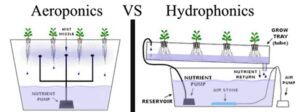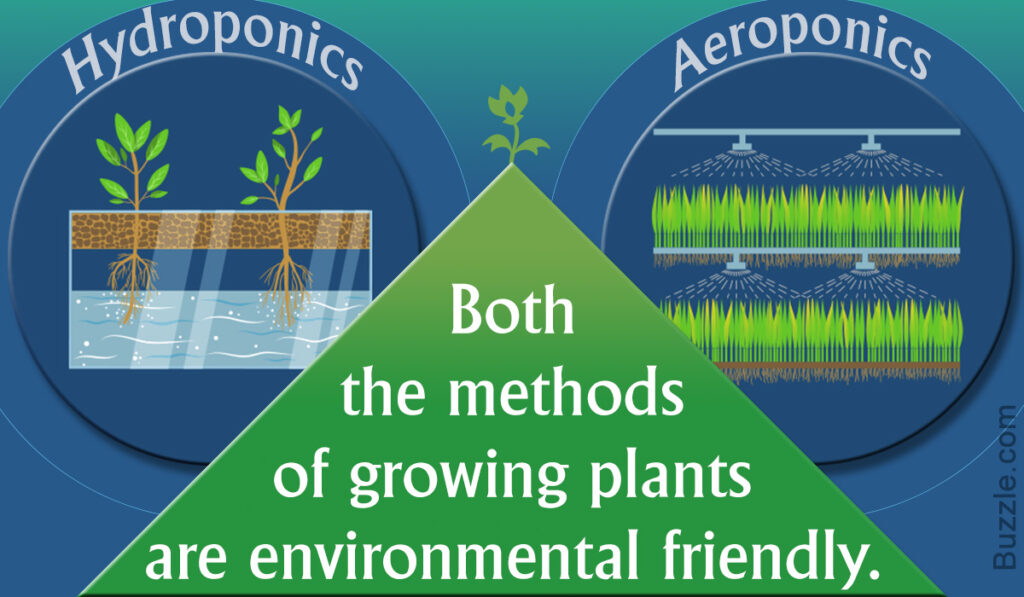Aeroponic vs Hydroponic Systems
Contents
A Comparative Guide
 With the increasing demand for sustainable and efficient farming practices, soilless agriculture has gained significant traction. Aeroponic vs hydroponic systems are two innovative methods of growing plants without soil, offering solutions to land scarcity, water conservation, and urban farming challenges. However, these systems differ in their design, operation, and benefits. This blog delves into the nuances of both systems, exploring their benefits, drawbacks, and potential applications.
With the increasing demand for sustainable and efficient farming practices, soilless agriculture has gained significant traction. Aeroponic vs hydroponic systems are two innovative methods of growing plants without soil, offering solutions to land scarcity, water conservation, and urban farming challenges. However, these systems differ in their design, operation, and benefits. This blog delves into the nuances of both systems, exploring their benefits, drawbacks, and potential applications.
What is an Aeroponic System?
How it Works: Aeroponics is a cutting-edge farming method where plants are grown with their roots suspended in the air. Nutrient-rich water is misted directly onto the roots at regular intervals. The system is often enclosed, protecting the plants and roots from external elements while allowing maximum oxygen exposure.
Advantages of Aeroponic Systems
-
-
- Higher Oxygen Availability: Exposed roots receive optimal oxygen, promoting faster plant growth.
- Efficient Water Use: Mist delivery systems use water sparingly, up to 90% less than traditional soil farming.
- Space Efficiency: Vertical setups allow for high-density planting, making it ideal for urban environments.
- Pest and Disease Control: Reduced contact with soil and water minimises the risk of soil-borne diseases and pests.
-
Challenges of Aeroponic Systems
-
-
- Technical Complexity: Requires precise control systems to maintain the misting process.
- High Initial Costs: The specialised equipment needed can be expensive.
- Maintenance: Regular maintenance is necessary to prevent nozzle clogging and ensure consistent nutrient delivery.
-
Ideal For: Urban farms, research labs, and growers looking to maximise yield in a limited space.
What is a Hydroponic System?
How it Works: Hydroponic systems grow plants with their roots submerged in a nutrient-rich water solution or supported by an inert medium like clay pellets, perlite, or coconut coir. Various hydroponic setups, such as the nutrient film technique (NFT), deep water culture (DWC), and drip systems, offer flexibility.
Advantages of Hydroponic Systems
-
-
- Consistent Nutrient Supply: Plants are immersed in a controlled environment, ensuring steady growth.
- Faster Growth Rates: Direct access to water and nutrients accelerates plant development.
- Versatility: Suitable for a wide range of plants, including leafy greens, herbs, and fruiting plants.
- Scalable Design: Hydroponic systems can be tailored for small home setups or large commercial farms.
-
Challenges of Hydroponic Systems
-
-
- Water Usage: While more efficient than traditional farming, hydroponics uses more water than aeroponics.
- Root Diseases: Constant exposure to water can lead to root rot if not properly managed.
- Electricity Dependency: Requires a continuous power supply for pumps and other equipment.
-
Ideal For: Home gardeners, commercial greenhouses, and educational setups.
Comparative Analysis of Aeroponic vs Hydroponic
Space Efficiency: Aeroponics is generally more space-efficient due to vertical stacking, making it ideal for urban settings. Hydroponics, while space-efficient, typically requires more horizontal space.
Resource Efficiency: Aeroponics uses less water and nutrient solution than hydroponics, making it more resource efficient. However, hydroponics is easier to manage and has a lower risk of system failure due to its simpler setup.
Cost: Hydroponics is generally more affordable to set up and maintain. Aeroponics, with its higher initial costs and maintenance needs, might be more suitable for those with a larger budget or specific high-yield goals.
Technical Expertise: Aeroponics requires more precise control and regular maintenance, making it more suitable for experienced growers. Hydroponics is more beginner-friendly and easier to manage.
Which System Should You Choose?
Your choice between aeroponic and hydroponic systems depends on your specific goals, resources, and expertise:
-
-
- Aeroponic systems are ideal if you aim for maximum efficiency in water use, have limited space, and are comfortable managing advanced technology.
- Hydroponic systems are better suited for beginners or those looking for a versatile and cost-effective method to grow a wide range of plants.
-
Conclusion to Aeroponics vs Hydroponics
Both aeroponic and hydroponic systems offer innovative solutions to the challenges of traditional farming. Your choice will depend on your specific needs, budget, and level of expertise. Aeroponics excels in space and resource efficiency, while hydroponics offers versatility and ease of management.
By understanding the strengths and challenges of each system, you can make an informed decision that best suits your agricultural aspirations.
Happy farming! 🌱

